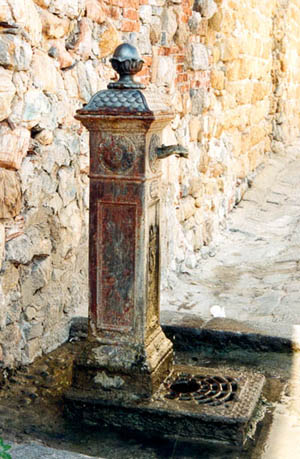 |
We stayed on the edge of the medieval city
of Cefalu, first mentioned by Diodorus Siculus in 396
BC. Work on the cathedral, one of Sicily's major Norman monuments,
was started in 1131 by Roger II. On the hill overlooking the
town are the ruins of the Byzantine fortifications and a prehistoric
sanctuary dating from the 9th century BC, The Tempio de Diana.
The water fountain provides welcome relief from the heat, as
do the many gelateria (ice cream shops) selling locally-made products. |
| The Duomo at Caccamo (another medieval
hill town) at the western end of the Piazza Duomo, is approached by passing
three lovely buildings. The centre one of these is the Chiesa
Matrice and it is flanked by two symmetrically arranged baroque buildings,
the Oratorio della Compagnia del Sacramento, built by the Normans and enlarged
in the 17th Century, and the Chiesa delle Anime Sante del Pugatorio. |
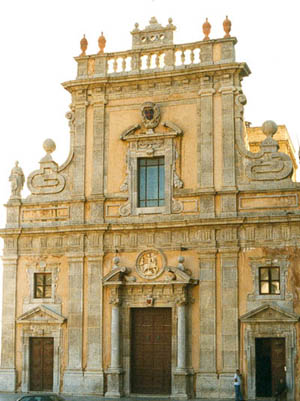 |
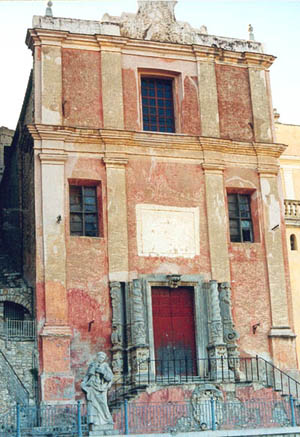 |
This is either the Oratorio della Compagnia del Sacramento
or the Chiesa delle Anime Sante del Pugatorio, one of the buildings by the
Duomo in Caccamo. The Chiesa Matrice is the little
bit of yellow on the right. To the left and beneath this building is
a large rock, out of which emerges a house. The colours and light in
this square were of a subtle beauty that photographic film cannot capture
and which simply do not look the same in cold northern Europe. |
| Lesley soaks up the mid-day sun at the ruins of
Selinunte. Founded in the 7th century BC, the city
was destroyed by the Carthaginians in 409 BC. The temple behind Lesley was
one of the largest in antiquity. It was 30m high and covered 6,120 sq
metres. |
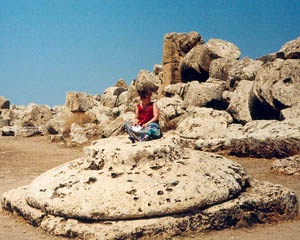 |
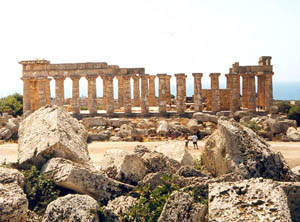 |
Temple E at Selinunte was built between
490 - 480 BC. Partly rebuilt in the 1960s, the temple was probably sacred
to Hera and is considered to be one of the best examples of Doric architecture
in Sicily. |
| Lesley, now avoiding the mid-day sun, shelters between
the Doric columns of the Gymnasium in the ruined city of
Solunto. One of the first Phoenician colonies in Sicily,
Solunto, on the slopes of Monte Catalfano, was conquered by the Romans in
254 BC and was largely abandoned by the 2nd century AD. The site
has very many fragments of mosaics and wall painting and is surprisingly
huge, hence the shade. |
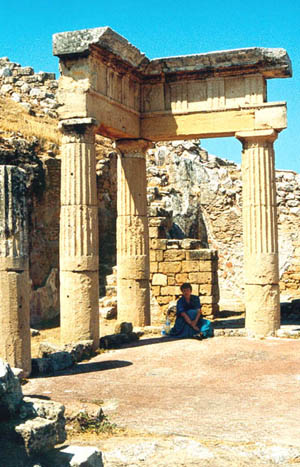 |
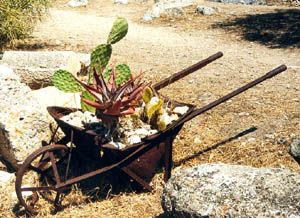 |
Final resting place for a wheel barrow in the ruins
of Solunto. The cactus is typical vegetation for the
island - a great many prickly pears could be picked if you had a
steel gauntlet! |
| Michael rests in the shade of a giant 150 year old
fig tree, Ficus magnoliodes, in the Palermo
botanical gardens. The Orto Botanico was laid out in 1785 and contains a
wealth of species. |
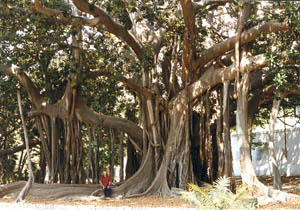 |
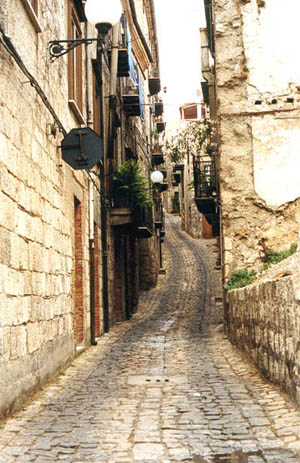 |
Enna is a mountain town known as
the 'belly button' of Sicily. At a height of 931m (3054 ft) the views over
the surrounding countryside are magnificent. As with most hill towns the
streets are narrow but, as you can tell from the tyre tracks, are regularly
used by cars. With no footpath (and very little room to spare), meeting
a car whilst walking on these streets can be challenging. Enna would
be a good place to be based for (another) holiday in Sicily as almost everywhere
is accessible as the autostrada is nearby. |
| We visited Castelbuono on
impulse at the very end of our last day on the island. The
castle is magnificent, built around a central courtyard (used, as is often
the case, for water collection as well as for light) and with seemingly endless
rooms leading from one to another. The town is lovely too, a hill town
with a maze of medieval cobbled streets. |
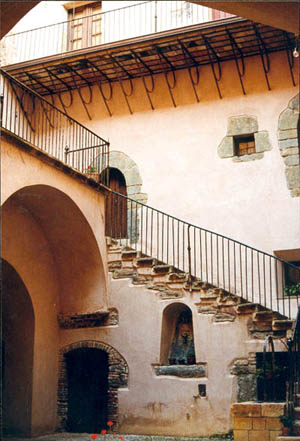 |
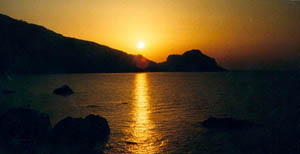 |
The sun sets over Cefalu. During our nine days on
Sicily we drove over 1100 miles, drank numerous bottles of wine (not whilst
driving), and had a thoroughly wonderful time. |










